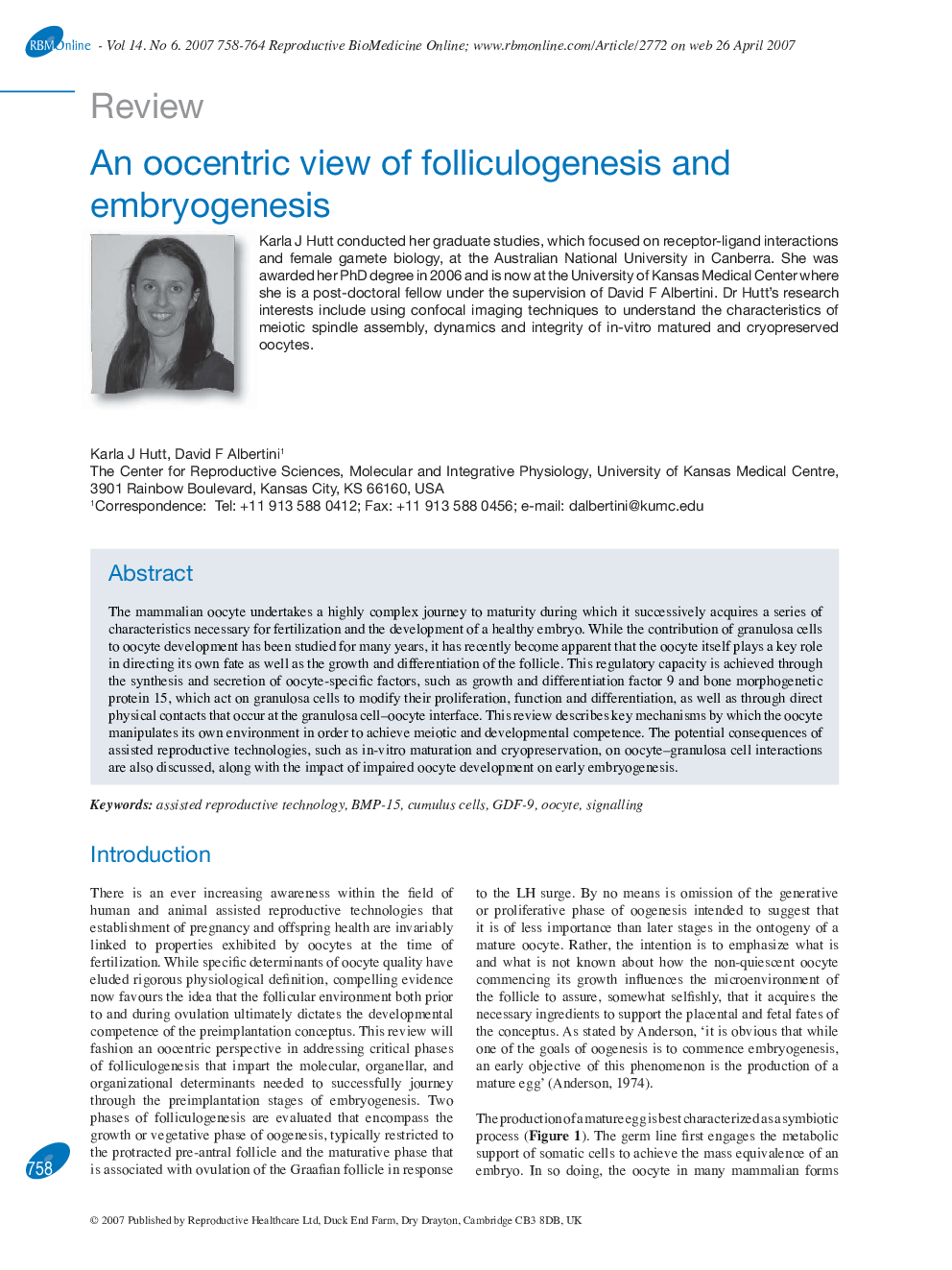| Article ID | Journal | Published Year | Pages | File Type |
|---|---|---|---|---|
| 3973464 | Reproductive BioMedicine Online | 2007 | 7 Pages |
The mammalian oocyte undertakes a highly complex journey to maturity during which it successively acquires a series of characteristics necessary for fertilization and the development of a healthy embryo. While the contribution of granulosa cells to oocyte development has been studied for many years, it has recently become apparent that the oocyte itself plays a key role in directing its own fate as well as the growth and differentiation of the follicle. This regulatory capacity is achieved through the synthesis and secretion of oocyte-specific factors, such as growth and differentiation factor 9 and bone morphogenetic protein 15, which act on granulosa cells to modify their proliferation, function and differentiation, as well as through direct physical contacts that occur at the granulosa cell–oocyte interface. This review describes key mechanisms by which the oocyte manipulates its own environment in order to achieve meiotic and developmental competence. The potential consequences of assisted reproductive technologies, such as in-vitro maturation and cryopreservation, on oocyte–granulosa cell interactions are also discussed, along with the impact of impaired oocyte development on early embryogenesis.
